This spring and summer, turn your attention to the bumblebees and let’s help save all the bees, says Jean Vernon.
You may have heard that insects are in severe decline. But you may not realise the wider implications of this. We don’t all like insects, we call them bugs and creepy crawlies often without understanding their importance. But without insects life on this planet would collapse.
In a nutshell most insects are food, either as adults or often as fat, protein rich grubs (caterpillars and larvae), for wildlife. They are an essential layer of the food chain. Insects feed the birds, the bats, the frogs and toads, the hedgehogs, the slow-worms and so much more. Without insects the ecosystem would completely collapse. It’s already creaking. Badly. And it’s a huge concern. I find it hard to focus on the fear and worry that this creates and instead choose to spread the love of these little things. Especially the bumblebees.
Bumblebee world
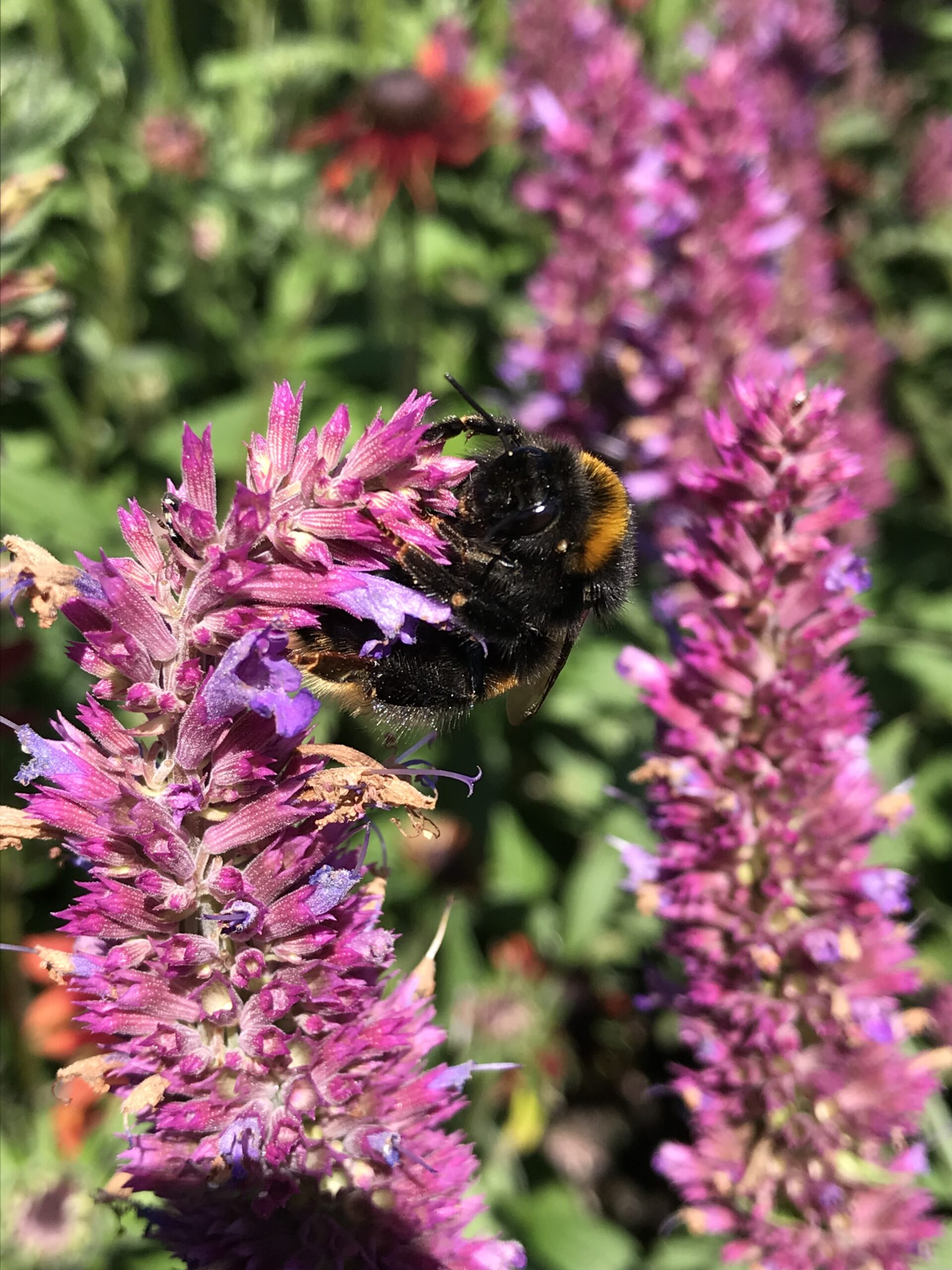
c. Jean Vernon
For the last few weeks, the peace of the garden has been enhanced by a deep buzzing sound as the queen bumblebees that have survived the ravages of winter, predators, disease and even gardeners brandishing their trowels and forks in the garden soil start to emerge. Bumblebees overwinter as a mated queen. They hatch in the previous summer within a bumblebee colony and emerge a week or so after the males. Their first job is to find a mate, hopefully a male from a different nest so that they can enhance the genetic diversity of their babies. Once mated the queen bumblebees need to feed up fast and this is when you will find the huge, freshly hatched and perfect queen bumblebees feeding on your nectar rich flowers in summer. They spend a few weeks feeding on agastache, verbena, echinops and other summer flowers. Then they find a safe hidey hole to overwinter, staying in a kind of suspended animation for 6 or 7 months. Often, they choose a north facing bank where the winter sun won’t wake them. And then as spring starts, species by species they start to emerge and build a nest.
All day nectar-bars
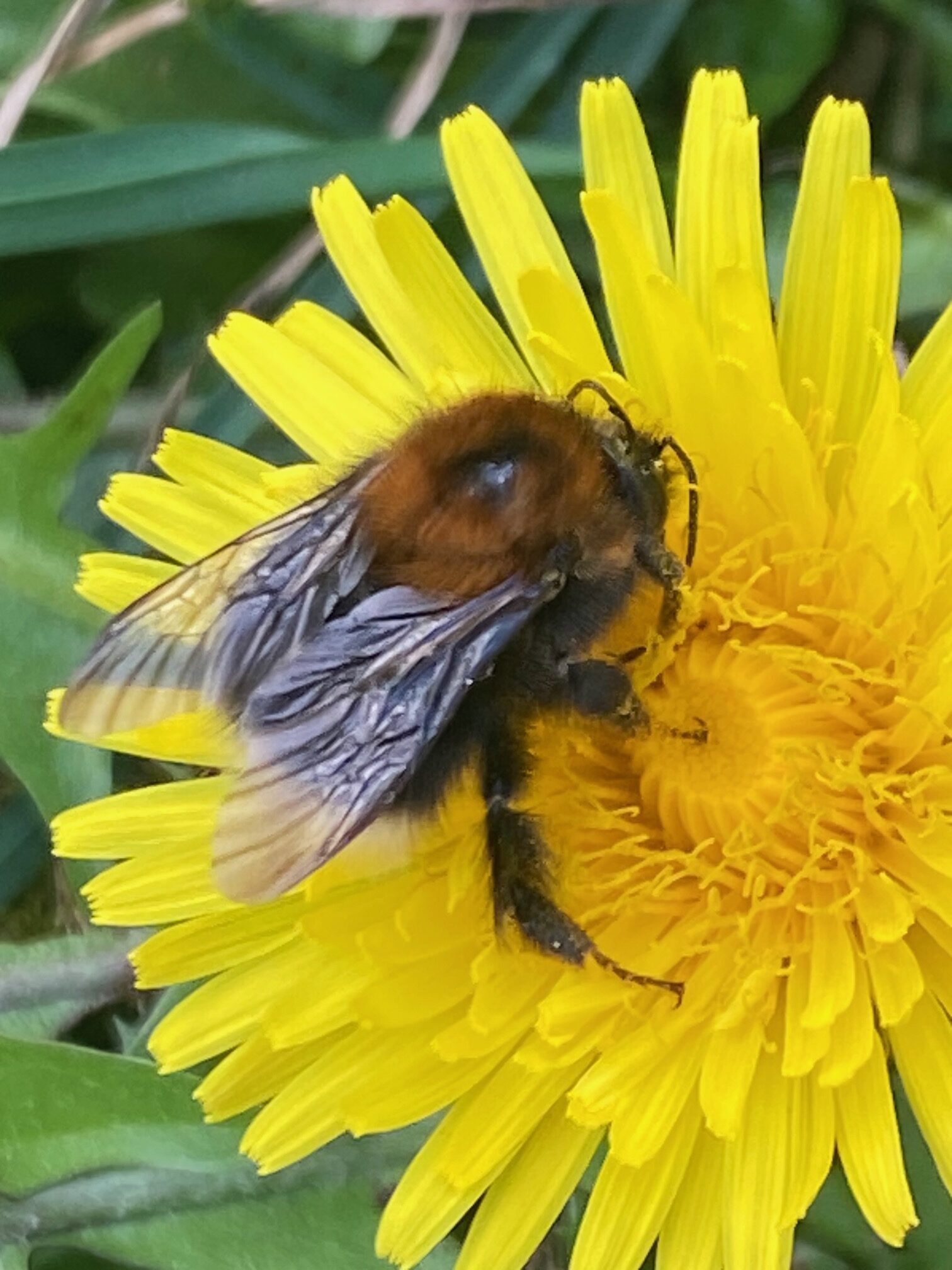
c. Jean Vernon
Emerging pollinators of all types need food fast and the right plants need to be in flower at the right time to ensure their survival. Bumblebees can start emerging from February onwards. And though many of us have crocus, snowdrops and hellebores in our gardens, it important to understand that different pollinators have different shaped tongues and they can’t all feed from the same shaped flowers. One of the most powerful plants in early spring is the dandelion. The flowers are virtual dinner plates for bumblebees providing copious nectar and pollen, though the pollen is not considered to be great quality. As spring progresses pulmonaria and comfrey add to the mix but nectar in the longer tubular flowers is not accessible by all species. Short tongued bumblebees will chew a hole above the nectary and steal the nectar from there. Fruit blossom, like cherries, plums, apples and pears as well as early flowering shrubs like currants and berberis all add to the buffet providing a virtual food hall for our buzzing friends.
Summer stalwarts
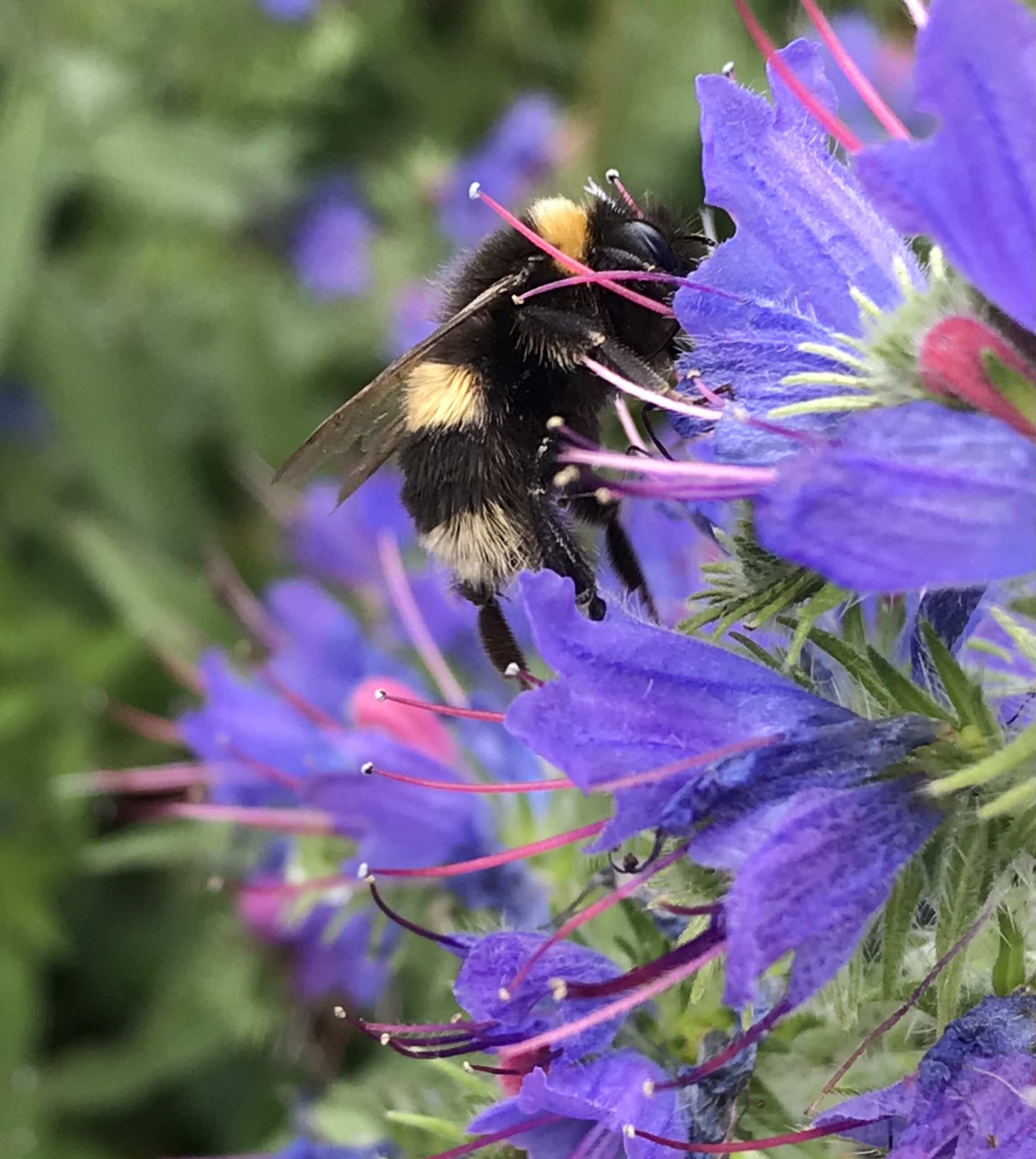
c. Jean Vernon
As summer beckons sometimes there is often a gap in the food supply for bumblebees and other pollinators. Think about flower shape and plants that have lots of nectar rich flowers in one place like lavender, globe thistles, wallflowers and daisies. Plan ahead for next summer, one of the very best summer flowers for many pollinators is vipers bugloss (Echium vulgare). It’s a hardy biennial and a native plant and its flowers are very rich in nectar. The plant replenishes its nectaries regularly and this makes it a powerful plant for our pollinators. Plus, it’s very easy from seed. That saves money on buying plants and means you can grow more to share. Other great plants to grow from seed include borage, cosmos and calendula.
Herbs for pollinators
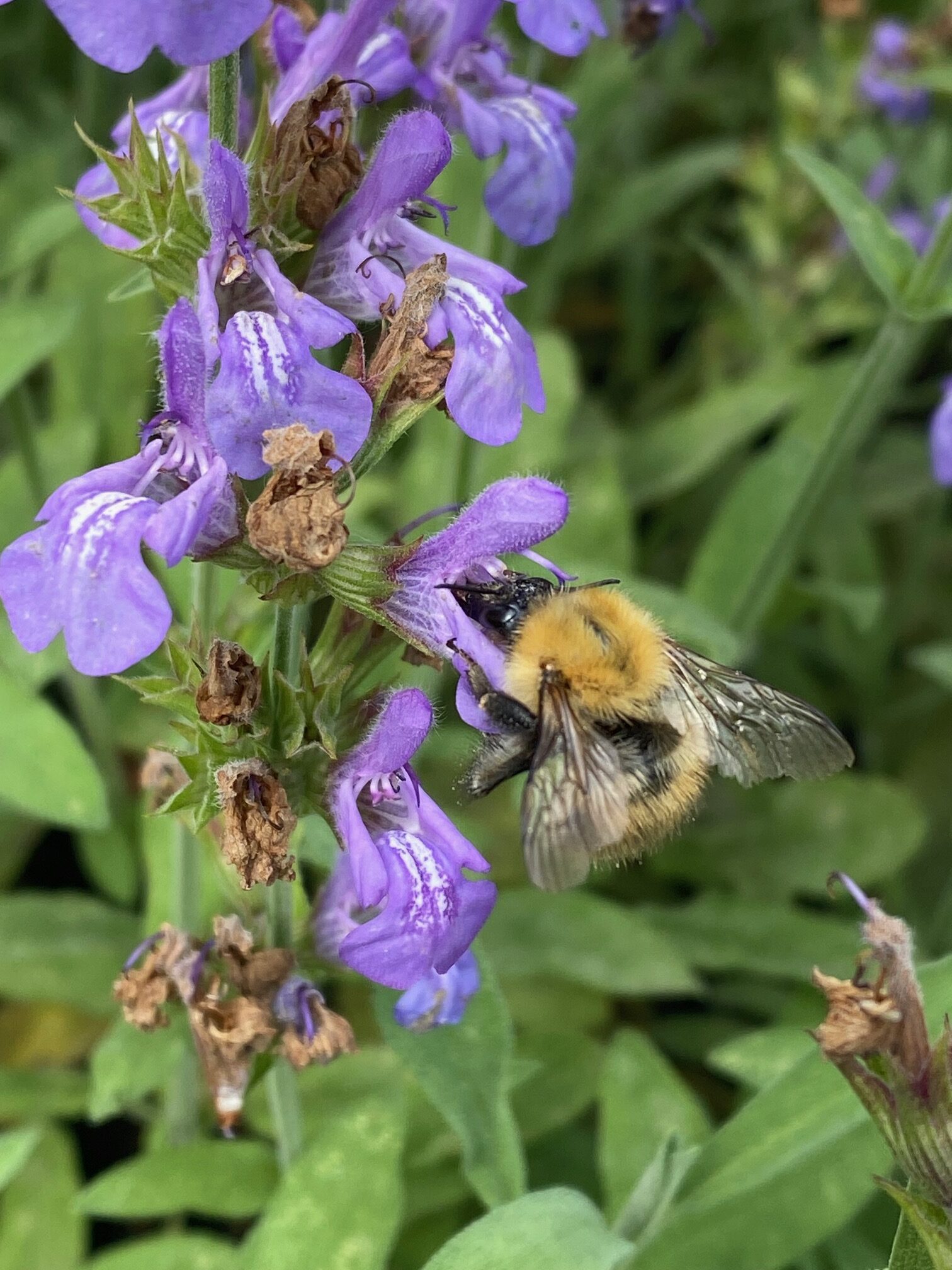
c. Jean Vernon
Don’t forget the herbs, not only is the nectar infused with powerful plant essences that may enhance health for our pollinating friends. There was some research that showed that bumblebees carrying a fungal disease called Nosema, self-medicated on the anti-fungal properties carried in the nectar of thyme flowers to cure themselves.
Great herbs to grow include rosemary, thyme, marjoram, mint and chives. Let a third of the stems flower and harvest the leaves and shoots of the rest for your culinary needs.
Nesting sites
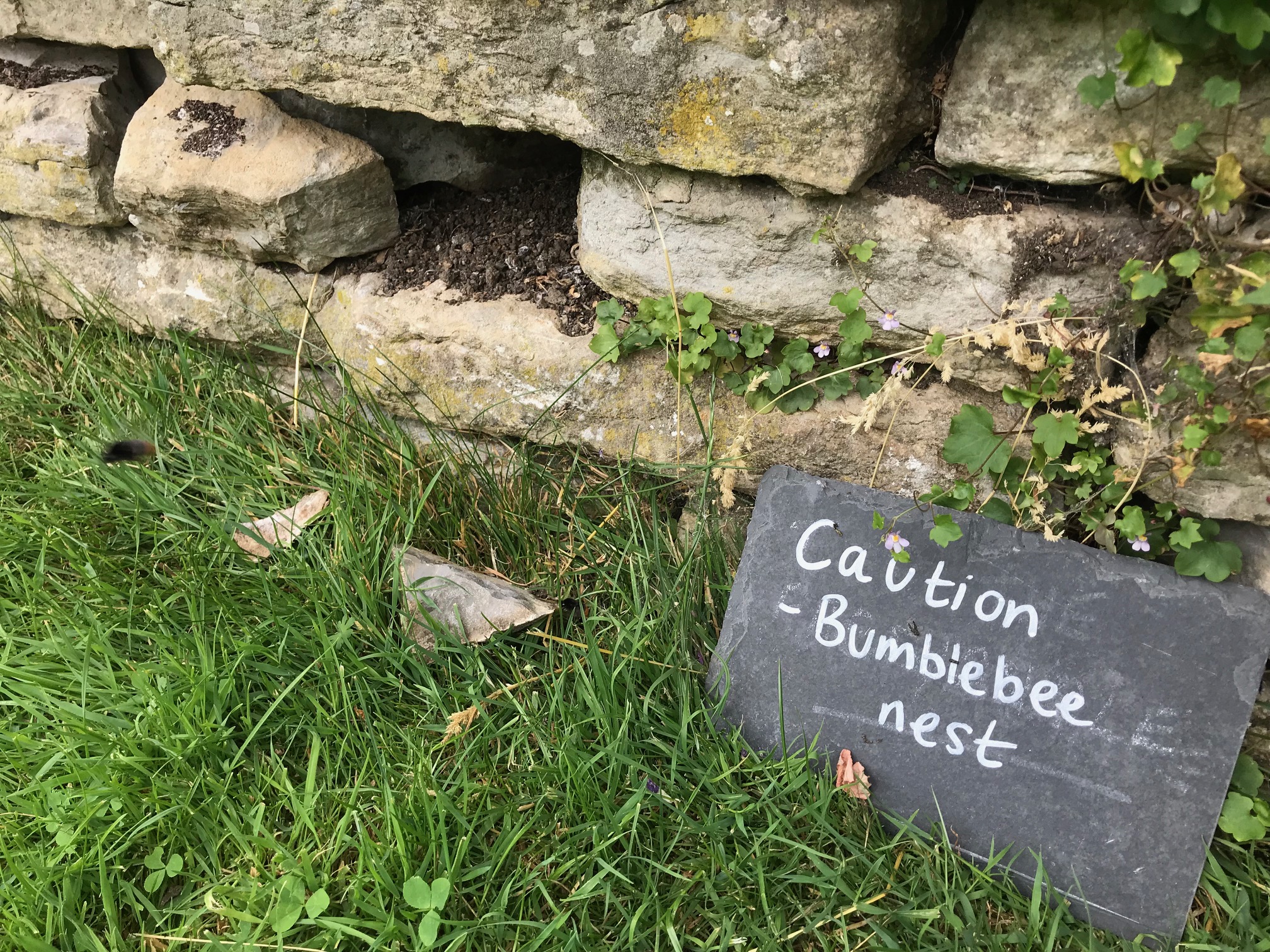
c. Jean Vernon
Bumblebees often nest in old rodent holes. They might nest in your compost heap, under the decking or under the shed, some nest in dry stone walls and the tree bumblebee will choose an empty bird box to make a nest, or may nest under the eaves of your house. If you have a nest, don’t worry, bumblebees can sting but they rarely sting, unless you interfere with their nest or step on them. The nest will be active for four or five months and will then complete its lifecycle in late summer or early autumn. Enjoy watching them, a bumblebee nest is a blessing.
Leaving a section of your garden to grow wild is a great way to help enhance the biodiversity. Be aware that overwintering queen bumblebees may be in piles of leaves or nestled in a hole below the soil surface. Take care when gardening in the autumn and winter and if you do disturb a sleeping beauty put her back where you found her.
Commercial value
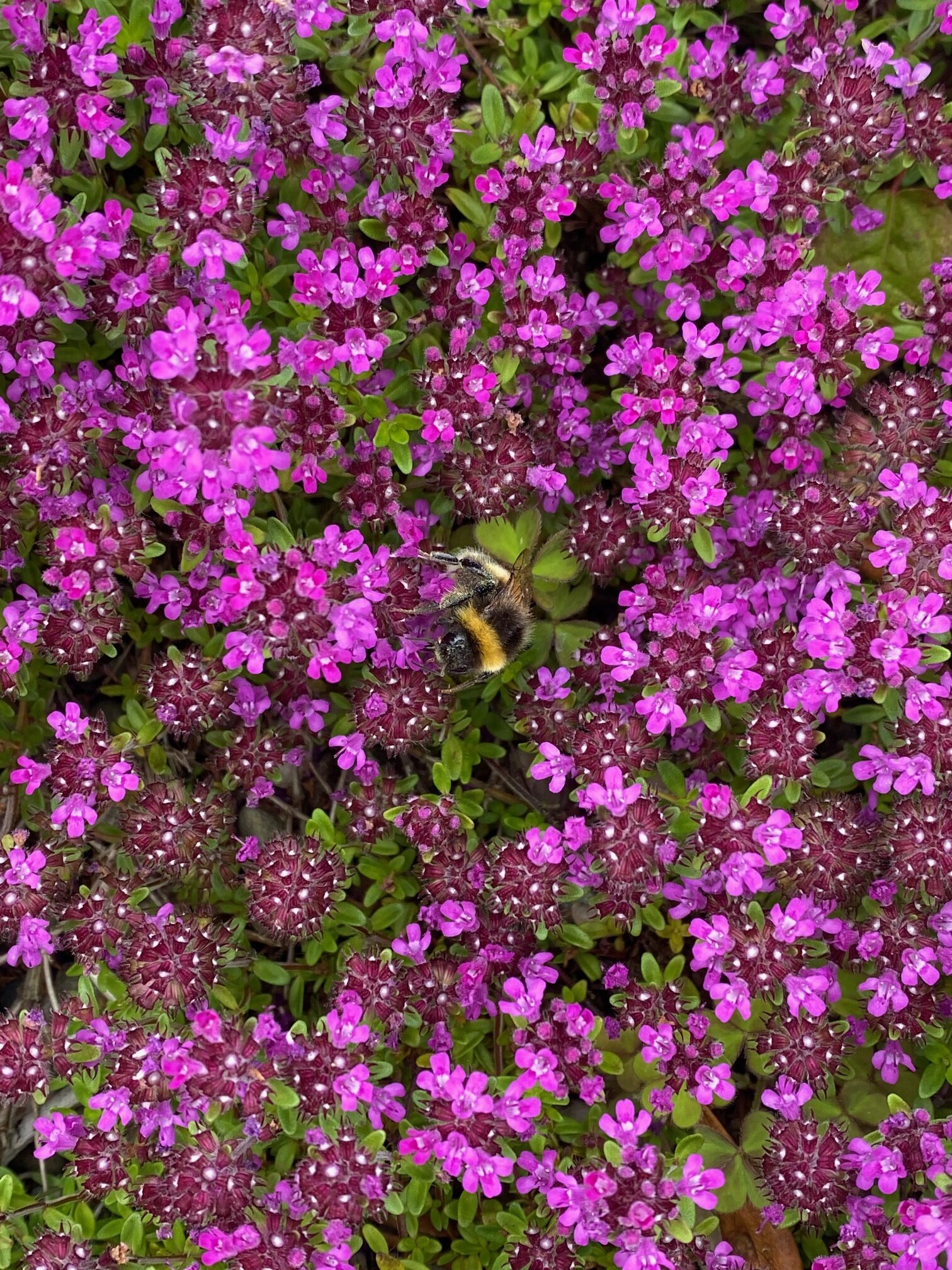
c. Jean Vernon
Insects don’t know that they are pollinators, they visit flowers to sup the energy rich nectar and some – like bees – collect the protein rich pollen to feed their babies. As they do this, they get covered in pollen which they move from flower to flower. Bees are effective pollinators because they exhibit floral constancy, which means that they work a flower patch, and visit flowers of the same type for fast efficient feeding, this makes them excellent pollinators. And the messier the bee, the better pollinator they are which makes the very messy solitary bees the most efficient little workers.
Pollinators have a huge commercial value. Some, like the bumblebees, are so valuable that they are bred and purchased as nests, to pollinate commercial, under-glass crops like tomatoes. Bumblebees use a technique to release the pollen called sonication where they vibrate at a higher frequency and make a higher pitched buzz. As the pollen is released, they get covered with it and comb it into their pollen baskets. Bumblebees have perfected buzz pollination and as a result they are exploited for their services.
Without pollinators we would not have many of our vital foods, and though scientists think that they can build robot bees, it would be far more effective channelling that money into looking after the pollinators that we have.
Already in parts of China, where bees have been affected by pesticides and other environmental issues, fruit trees are being hand-pollinated by a workforce whose tools are a ladder and a bag of pollen and a brush.
We need to protect and support them. If you want to learn more about bumblebees you might like my bee book. The Secret Lives of Garden Bees.
The Bumblebee Conservation Trust has an excellent website with fabulous resources for all ages and are working very hard to save the 24 species of bumblebees that we have in the UK.


